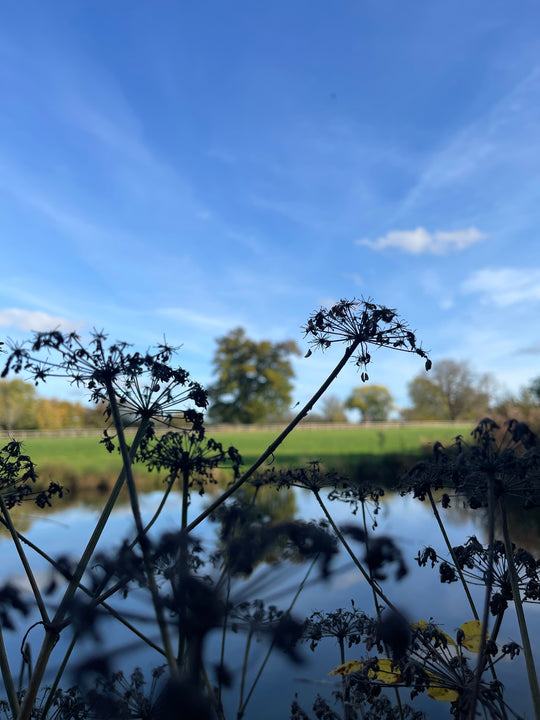Angelica Root
Posted on March 22 2023,

Although the Latin translation of Wild Angelica (A. Sylvestris) means ‘Growing in Woodland’ or ‘Of The Forest’, it is more often than not, found growing in damp areas such as beside streams, ditches or around the banks of ponds. This is where it grows best in Oak Moor Meadow, adding to the wide variety of species in the landscape and bringing different elements of interest throughout the year. From its fresh green leaves to it’s beautiful flower heads that continue their beauty into the winter months as wonderful sculptural structures. It is a botanical that is admired by us here at Meadow Oak Distillery for this reason alone. However, there is more to this plant than just it’s visual splendours.
Angelica has been used for centuries for medicinal purposes and it’s frothy umbelliferous flower heads are of significant benefit for a range of pollinating insects.
As with most gins, the variety used is (A. Archangelica) which is a very close relative of Wild Angelica. It is more commonly known as Norwegian Angelica, Wild Celery, Holy Ghost and Garden Angelica. This is the variety that we use in ‘Heartwood of Oak Moor Meadow’ gin.
Angelica is used in gin to add an earthy, herbaceous sweetness to the flavour but more importantly, it is used as a fixative to stabilise and balance the lighter, more delicate and more volatile flavours.
There are around 60 species of Angelica and with all plants that you intend on interacting with, it is important to know which is which and who is who! Angelica has some very convincing lookalikes, that if ingested, could have serious consequences indeed! A few examples of these lookalikes are Hemlock (Conium Maculatum), with its red/purple spotted stem and Hemlock Water Dropwort (Oenanthe Crocata), said to be the most poisonous indigenous plant in Britain. So care must be taken when foraging!

0 comments